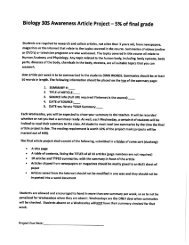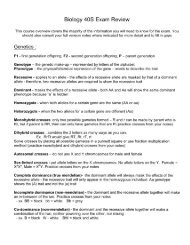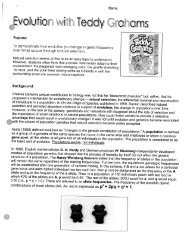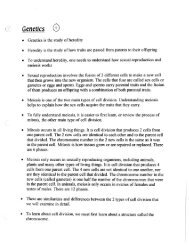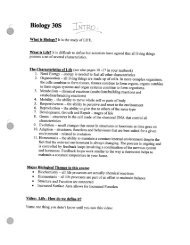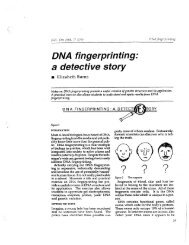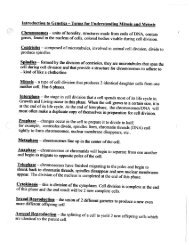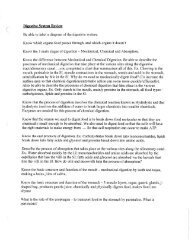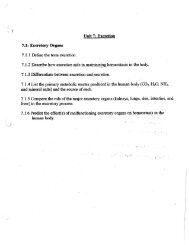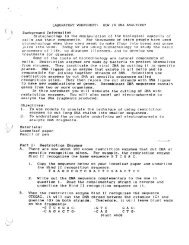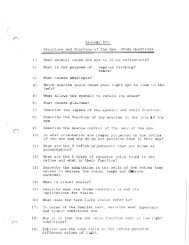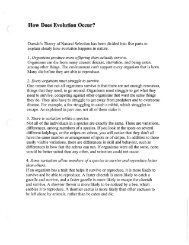The Roles of the Nephron of the 120 ml of blood that is ... - Mrs Stovel
The Roles of the Nephron of the 120 ml of blood that is ... - Mrs Stovel
The Roles of the Nephron of the 120 ml of blood that is ... - Mrs Stovel
- No tags were found...
Create successful ePaper yourself
Turn your PDF publications into a flip-book with our unique Google optimized e-Paper software.
stream. Because <strong>of</strong> <strong>the</strong> continual re-absorption <strong>of</strong> water, <strong>the</strong> filtratebecomes more and more concentrated with wastes, mainly urea. <strong>The</strong>amount <strong>of</strong> water <strong>that</strong> diffuses can be regulated by a hormone calledADH. <strong>The</strong> amount <strong>of</strong> water <strong>that</strong> diffuses from <strong>the</strong> DCT back into <strong>the</strong><strong>blood</strong> depends on <strong>the</strong> needs <strong>of</strong> <strong>the</strong> body; if <strong>the</strong> body <strong>is</strong> dehydrated, morewater will go back into <strong>the</strong> <strong>blood</strong>, and less will be left in <strong>the</strong> nephron tomake less urine. <strong>The</strong> opposite occurs if <strong>the</strong> body <strong>is</strong> over hydrated.E. Collecting Tubule C<strong>The</strong> same thing <strong>that</strong> occurs in <strong>the</strong> DCT also occurs in <strong>the</strong> CT3. SecretionOccurring at <strong>the</strong> same time as reabsorption <strong>is</strong> a process called secretion.Secretion <strong>is</strong> when a cell releases a substance to its outside... in th<strong>is</strong> case,non-useful and toxic substances are ACTIVELY TRANSPORTED from <strong>the</strong><strong>blood</strong> into <strong>the</strong> nephron - usually in <strong>the</strong> regions <strong>of</strong> <strong>the</strong> d<strong>is</strong>tal and proximalconvoluted tubules. Substances which are secreted include excess acid (H+)or base (OH-) ions, excess glucose (high glucose levels are found in diabeticurine or urine <strong>of</strong> someone who has recently consumed a large amount <strong>of</strong>sugar-th<strong>is</strong> <strong>is</strong> <strong>the</strong> kidney's way <strong>of</strong> helping to ensure <strong>that</strong> <strong>the</strong> <strong>blood</strong> sugarlevel doesn't get too high), ammonia, and drugs (th<strong>is</strong> <strong>is</strong> why urine <strong>is</strong> usedfrom many drug tests - <strong>the</strong> breakdown <strong>of</strong> many drugs including marijuana,cocaine, heroin, sleeping pills, codeine and many o<strong>the</strong>r medications can bedetected even in minute amounts in <strong>the</strong> urine). <strong>The</strong> process <strong>of</strong> secretionensures <strong>that</strong> materials <strong>that</strong> are potentially harmful to <strong>the</strong> body are quicklyd<strong>is</strong>posed <strong>of</strong> by being "dumped" into <strong>the</strong> fluid <strong>that</strong> <strong>is</strong> about to become urine.Secretion happens mainly in <strong>the</strong> regions <strong>of</strong> <strong>the</strong> DCT and CT but some alsooccurs in <strong>the</strong> PCT. In short, secretion involves "bad" stuff being removedfrom <strong>the</strong> <strong>blood</strong> being sent to <strong>the</strong> urine.



